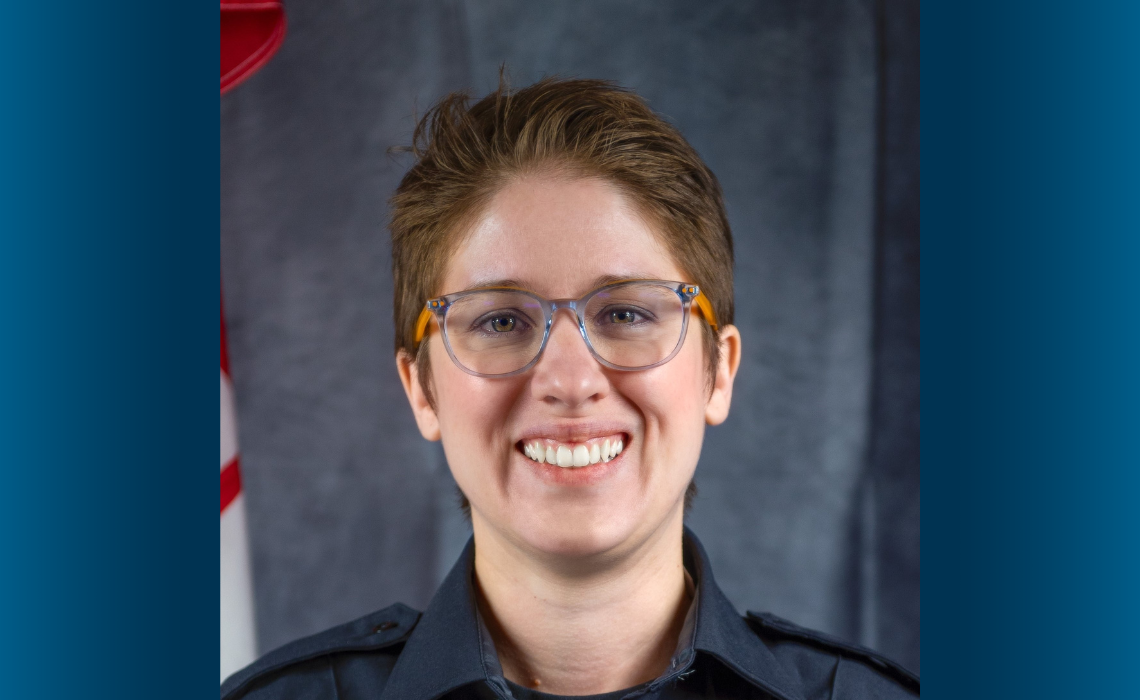Putting education to work

While paramedics, police officers and firefighters are nearly synonymous with “9-1-1” in Canada, there are layers of supporting staff and technology dedicated to ensuring that first responders can arrive at an emergency scene as quickly and as well-informed as possible.
Kim Sauter spent 14 years as an Emergency Communications Officer - perhaps more commonly known as a 9-1-1 operator - for The City of Calgary (the City). In that role, she spent a couple of years working on a nationwide project initiated by the Canadian Radio-television and Telecommunications Commission (CRTC) to transition the 9-1-1 phone system from analog to digital. Known as next-generation 9-1-1, the transition is expected to introduce enhanced features that improve service to 9-1-1 callers and ease of use for operators.
“Basically, all 9-1-1 traffic will no longer transit on analog lines. We’ll be moving to a digital system, which will have a lot of benefits for citizens,” Sauter explains.
“On the operator’s end, it will improve device-based location, integrate multiple databases - for example, locations where hazardous materials are stored - and make it easier to transfer calls to different agencies. Eventually, the plan is to introduce real-time texting between a caller and an operator.”
Since starting her work on the project years ago, Sauter has transitioned to a career as a business analyst at the City and says that Mount Royal’s Business Analysis Extension Certificate program was an essential part of her successful move.
Sauter began contributing to the next-generation 9-1-1 project in her position as an Emergency Communications Officer. As a member of the “end-user” group who would be using the system most often, she was sought out for feedback. After successfully applying to a new position as a business analyst, she continued her work on the project.
“It turned out that I had been doing a bit of business analysis work in my previous role in a lot of ways and in other projects,” Sauter says. “I wanted to be able to stay in this new role for the long term because I really enjoyed it and I wanted to be involved with the 9-1-1 project for a long time.”
After transitioning to her business analyst role and working with a team made up of project managers, subject matter experts and other analysts from agencies across the country, Sauter found that she needed further education in the particulars of the work. While she had experience as an end user, she found that the information required from a business analyst needed to look beyond specific functional requirements and take a broader position of breaking down high-level business needs into measurable objectives.
Fortunately, her supervisor knew about Mount Royal’s Business Analysis Extension Certificate and Sauter was supported to register in the program.
From the first course, she found that the lessons helped her see how all the pieces of a business - and her project, by extension - work together.
“I really recommend that people take the whole program, particularly if you’re someone who doesn’t come from a business analysis background,” she says. “The courses were all incredibly valuable. If someone wants to go into business analysis, or even go into project management, I think they should take the appropriate and applicable course at Mount Royal. It gave me such good hands-on knowledge and practice when it came to actually doing the tasks required of me in this role and switch from an end user to an analyst.”
Sauter says the knowledge she gained from her education at Mount Royal has helped her become a better business analyst.
“The business analysis program teaches students to see the bigger picture. There are multiple ways to solve a problem and the business analyst’s role is to look into all of the options and find the best one based on the business need. They are also skilled at looking forward to process improvement and optimization. As an end user, it’s really easy to have a very narrow focus, and I think that’s one of the ways the program helped me to grow and fit into my new role.
It’s actually shocking how different my work is from when I first started the program to now. It’s obvious that I’ve learned how to do some of the tasks being asked of me and I’ve seen the quality of my work improve.”
Sauter cites facilitation skills as another key takeaway from her studies.
“A big part of being a business analyst is understanding how to elicit relevant information from all of the concerned parties. That is different from being the end user, where you know how to use the solution provided and provide feedback to business analysts or other project staff,” she explains. “Learning how to facilitate is a significant component of the certificate program that I think anyone transitioning from being an end user to a business analyst should really focus on. It’s critical to move away from your own opinion on the solutions. You have to be open to all sorts of different possibilities and perspectives in order to find the best way for all of the parties involved.”
Next-generation 9-1-1 is expected to roll out across the country in phases, improving the system’s accessibility and accuracy.
Sauter has submitted her application to graduate and plans to continue working on this project in the years ahead.
Registration is now open for Business Analysis Extension Certificate courses - including the 4-week fast-track program - starting in July. Visit the program page for more information.

